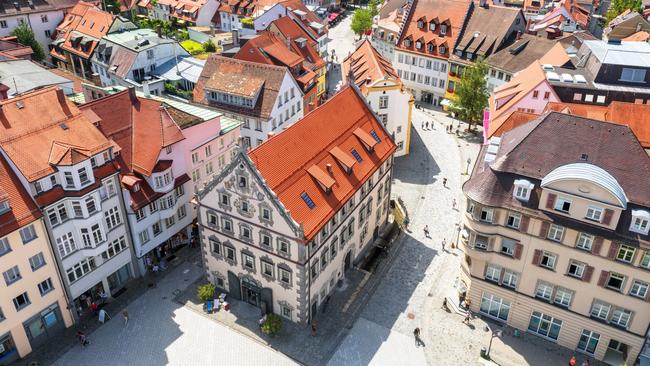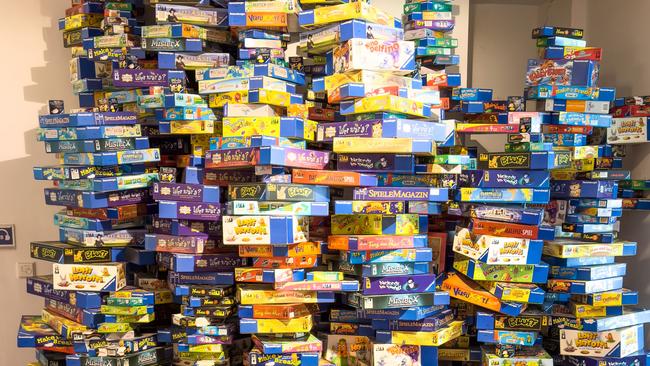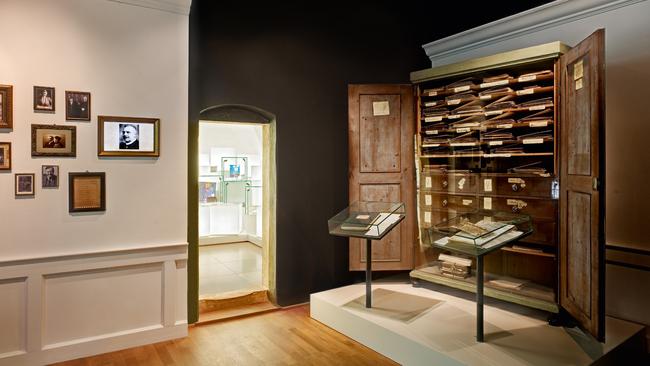The German village that looks like a jigsaw puzzle
There is a good reason why Ravensburg is familiar – it is the home of one of the world’s biggest puzzle companies, Ravensburger.

It was an item in the weekend paper that piqued my interest: the Australian jigsaw puzzle championships. They have competitive jigsawing? Sure, in our house it’s a race to the death to claim the last piece, but this? Then there was the prize, a trip for two to the “jigsaw museum in Germany”. I read this out to my wife and we responded as one: “Ravensburger”.

It could be nothing else. For a decade or more, our house was full of this brand’s games and puzzles – Labyrinth, Memory, P Is For Popcorn – and a weekly ritual was swapping them over at the toy library. I found Ravensburg on the Google map and, with a Europe trip by train in the offing, it was an easy detour.
Which is why we find ourselves standing before an old building in this southern Bavarian town, in a streetscape of fancy facades that’s the stereotypical jigsaw image.
Once the Maier family bookshop, young Otto Maier took it on in 1876. Branching into publishing and with a belief that children should be educated in a “playful manner”, Otto created his first board game in 1884, Journey Around The World, based on Jules Verne’s Around The World In 80 Days. Seven years later, he released his first puzzle, a simple wave-cut called Geographical Patience Game, also designed as a child’s learning tool.

Otto was a sketcher – in 1900 he drew the launch of the first zeppelin on Lake Constance – and the museum’s entry room contains his desk and cabinet full of files his great-grandchildren found in the 1980s.
Ravensburger hit its straps in the 1950s and ’60s. Memory, which now exists in many editions, came out in 1959, and you play it at the museum in a way, with hundreds of the cards dangling from the second-floor ceiling, although trying to locate the exact pairs can induce a stiff neck.

Drawers hold hundreds more games, including a 1958 card deck called Wolkenkuckuckshaus, or Cloud Cuckoo House, drawn by designer Charles Eames.
The first interlocking jigsaw appeared in 1964, opening the door to further dimensions, so leave room in your suitcase for a 3D Eiffel Tower, Porsche 911 or even a globe of the world. The company has naturally also branched into electronic games.

The museum displays many iterations of Labyrinth, developed by psychologist Max J. Kobbert. An advanced version called Master Labyrinth – not the one played in our house – has won a Mensa Select award. And it requires a room to show off a full-on construction of GraviTrax, Ravensburger’s intricate marble-run race game. They provide a vat of parts to build your own modest version.
Its greatest treasure is an original copy of Journey Around The World, a feat the company achieved with markets in 90 countries. It bought Swedish toy company Brio – another toy library regular – in 2015 and the Disney logo is on many products. There’s even Ravensburger Spieleland, a Disneyland of sorts, south of town. But like many European mega-companies, it’s firmly a family firm, with Otto’s great-grandson, Clemens Maier, at the helm.

Several families are visiting today, and we notice two small girls making excited purchases with their mother in the gift shop. Later, while strolling along looking for a suitable Kaffee und Kuchen place, this trio are sitting at a cafe, already playing their new game.
Ravensburg is a lovely breath-catcher away from the big German cities. It prides itself on its towers, which populate the walled perimeter of the old town as well as on a prominent hill, where the castle is now a youth hostel. This adds to the overall feel that, like its eponymous and most prominent business, this town has a sense of fun.
Jeremy Bourke travelled with the assistance of Rail Europe.

To join the conversation, please log in. Don't have an account? Register
Join the conversation, you are commenting as Logout